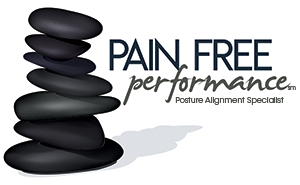Here is an article from Egoscue.com on how our backs work, and how we can ease our bodies into a more natural (and less painful) posture while still being productive:
Lower Back Pain Relief
The symptoms of back pain can vary from low grade aches to full blown back spasms. The urgency to solve the back pain consumes your life and drastic treatment procedures are pursued without a second thought. Anyone who has suffered through a severe back spasm knows how excruciating it really is. These spasms are so intense it seems this kind of pain is in a class of its own.
This type of pain is so unbearable that it has been known to prevent people from being able to think straight. One of the best ways to treat back pain is to stop it before it happens and when it does happen, find a way to break the spasm before it accelerates to full blown. The best way to prevent back pain without drugs, surgery or manipulation is knowing the correct way to exercise and function in every day life.
When you know what the cause of your pain is, only then will you have the ability to know how to prevent it. Keeping your body healthy and flexible is key, it’s all about knowing how to take care of yourself. Proper nutrition helps in the flexibility of muscles and allows them to heal faster should they get pulled or torn. Also, certain stretching techniques and having proper posture while exercising is essential to preventing back spasms and residual pain.
For those who suffer from degenerative disc disease, spondylolisthesis, spinal fusions or scoliosis embody the symptoms of a chronic condition. Sufferers can help their conditions by focusing attention on the muscles involved in stabilizing the body’s skeleton. These very important muscles should be kept strong, flexible and balanced in all movements.
The spinal column is composed of 33 individual vertebrae, stacked one on top of one another, and threaded with the spinal cord. The spine can be looked at as the drive shaft as its unique shape allows the body to pull off extraordinary balancing acts on a daily basis. However, the muscles are also essential, not only to retain the spine’s shape but to hold it erect. Conversely, inactive, atrophied, and compensating muscles alter the lumbar, thoracic, and cervical spinal curves. Over time in the body’s improper movement and malnourished lifestyles, the magical S-Curve diminishes, taking with it the spine’s flexibility, load-bearing strength and shock-absorbing capacity.
Abandoned by the muscles, and losing the integrity of its curves, the spine is at the mercy of gravity. Rigidity sets in and the body does what it does best and protects itself by throwing the muscles into contraction. Eventually, the spine reaches its limits and it begins to stiffen the posture in a compromised flexion position. The result is chronic back pain; the cure is proper nutrition and knowing your body’s limits.
Don’t push yourself; if something’s too heavy than don’t lift it; if you feel yourself experiencing pain while sitting at your desk everyday, adjust your surroundings. Make sure your chair is properly positioned so your elbows are at a 90 degree angle on the desk and your eyes are parallel with the computer screen. These small gestures can go a long way in preventing future chronic back lower back pain.
this article is from http://www.egoscue.com/about/articles.php
